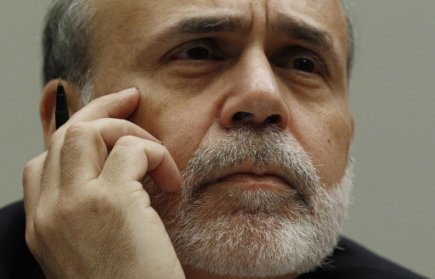
U.S. Mortgage Rates up 40% Since October
original article written by Net Advisor™
Real Estate News. Interest rates on 30-year mortgage loans hit 4.72% today up +40.48% since Oct. 4, 2012.
People in the industry will try and tell you that rates are still historically low, which is true. However they will also likely tell you that rates are up just over one-and-a-third-percent which is correct in actual points, but would be false in terms of, what is the percent increase from Oct. 4th? Here is the math:
[Interest Rate Math: Current rate 4.72% minus rate on 10-04-12 which was 3.36% = 1.36%; then 1.36% divided into 3.36% = 40.476% rounded to 40.48% = increase in interest rates from 10-04-2012 low].
[1] How Much More Will I Pay?
How much more will one pay at current rates verses last October? On a $500,000 mortgage which doesn’t buy you a house if you live on the west or east coast will cost $6,800 more per year or $566 more per month compared to rates last Oct 4th.
On a $250,000 mortgage we are looking at $3,400 more per year or $283.33 per month compared to Oct 4, 2012.
[2] Hope You Don’t Have an Adjustable Loan
If you have followed me actively on Twitter (or in person), I have talked about locking in the historical low rates. If rates go down further one can always try and refinance. Rates are not going down now, they are go up. The interest rate trend is likely to continue higher. The good news is the real estate prices should come down at some point. One cannot have higher rates and higher real estate prices be sustained together for a long time.
If you have an adjustable rate loan, I would have to ask why unless you plan to pay off the home before the loan rate resets. When those adjustable loans reset they will reset to the current rate plus the number of points stated in the housing contract (ie: Prime plus X% points).
This is what hurt a lot of people in the housing bust of 2006-2010. They got these low teaser rates because they could afford them. When rates climbed (thank the FED, Report Point 12), millions of people could no longer afford paying on their home. Add massive job losses and wallah, welcome to the recession.
[3] Bond Prices
The 30-year bond (U.S. Gov Treasury Debt) was $129.53 when President Obama took office on Jan. 20, 2009. At time of quote today the 30-year bond was trading at $96.95 or down $32.58 (per $1,000 invested) or about -25% (ouch). When bond prices fall, the yield (and interest rates) tend to go higher.
[4] The FED & the Artificial Economy
The Federal Reserve Bank has been printing $85 Billion per month to try and keep interest rates down, and make mortgages more affordable. The FED has been discussing “tapering” (pulling back) its stimulus: It’s not working, so why not cut the stimulus? The stock market has been in denial for years (since 2009) about the true picture of the economy.
Stocks have soared on artificial stimulus that aimed to keep interest rates down. In 2009, the U.S. government pretty much guaranteed the values of just about everything. That put a floor on the economy. The economy can’t go to zero if the government will guarantee a price on assets. However, the true test of a free economy is when you take the training wheels back off and allow markets to be released from government and the FED’s artificial influence.
[5] The Economy
The economy at best is experiencing tepid growth, which suggests that all this artificial stimulus hasn’t worked. Some might argue that without all the stimulus things would be much worse. That part might be partially true, but only back in 2009ish. I would argue that the economy would have tanked further in a deeper recession in 2009, but market forces would have made adjustments to reflect for the current condition and become more competitive.
The result would have been a longer recession, but also a stronger economy, not controlled by high government influence would have emerged. Some have argued that the Great Recession was avoidable. There is a lot to this, but yes, the blame can be shared just about everywhere.
The stock market completely misunderstands the economy. The market just wants crack stimulus so it can borrow at low rates. Case in point: Our article on how the Dow Jones Industrial Average soared last June 2013 on higher unemployment numbers. Bad news like this means the FED will keep the stimulus coming. What the market does not seem to understand is that this party will end one day.
I would argue that interest rates and inflation will go higher, but as long as government and the FED manipulate the inflation data most people will only see the results at the gas station and in food prices. Don’t worry about inflation, the government does not count food and energy prices as part of their inflation numbers (report).
Images may be copyright by their respective owner.
original article content, Copyright © 2013 NetAdvisor.org® All Rights Reserved.
NetAdvisor.org® is a non-profit organization providing public education and analysis primarily on the U.S. financial markets, personal finance and analysis with a transparent look into U.S. public policy. We also perform and report on financial investigations to help protect the public interest. Read More.

